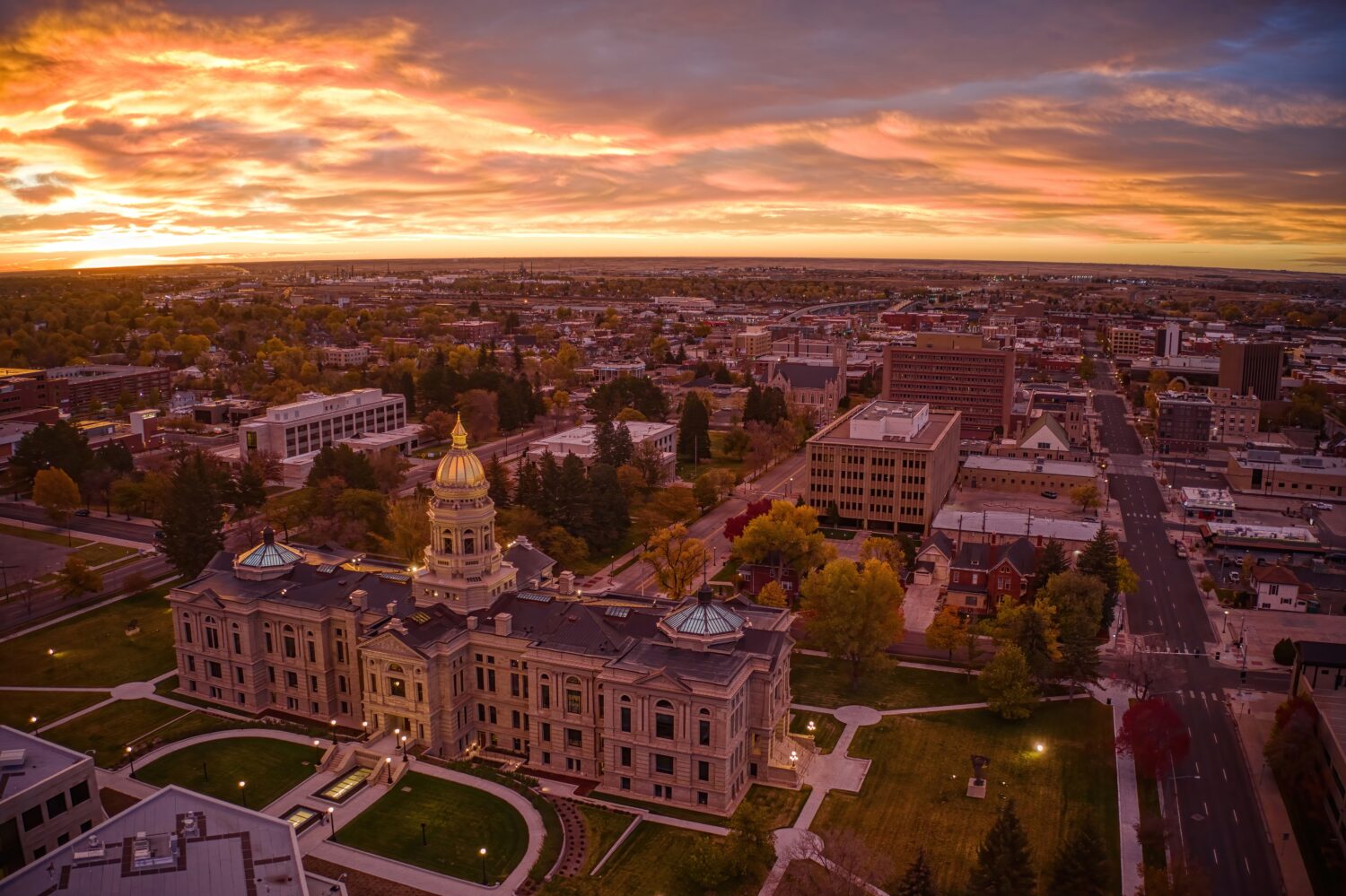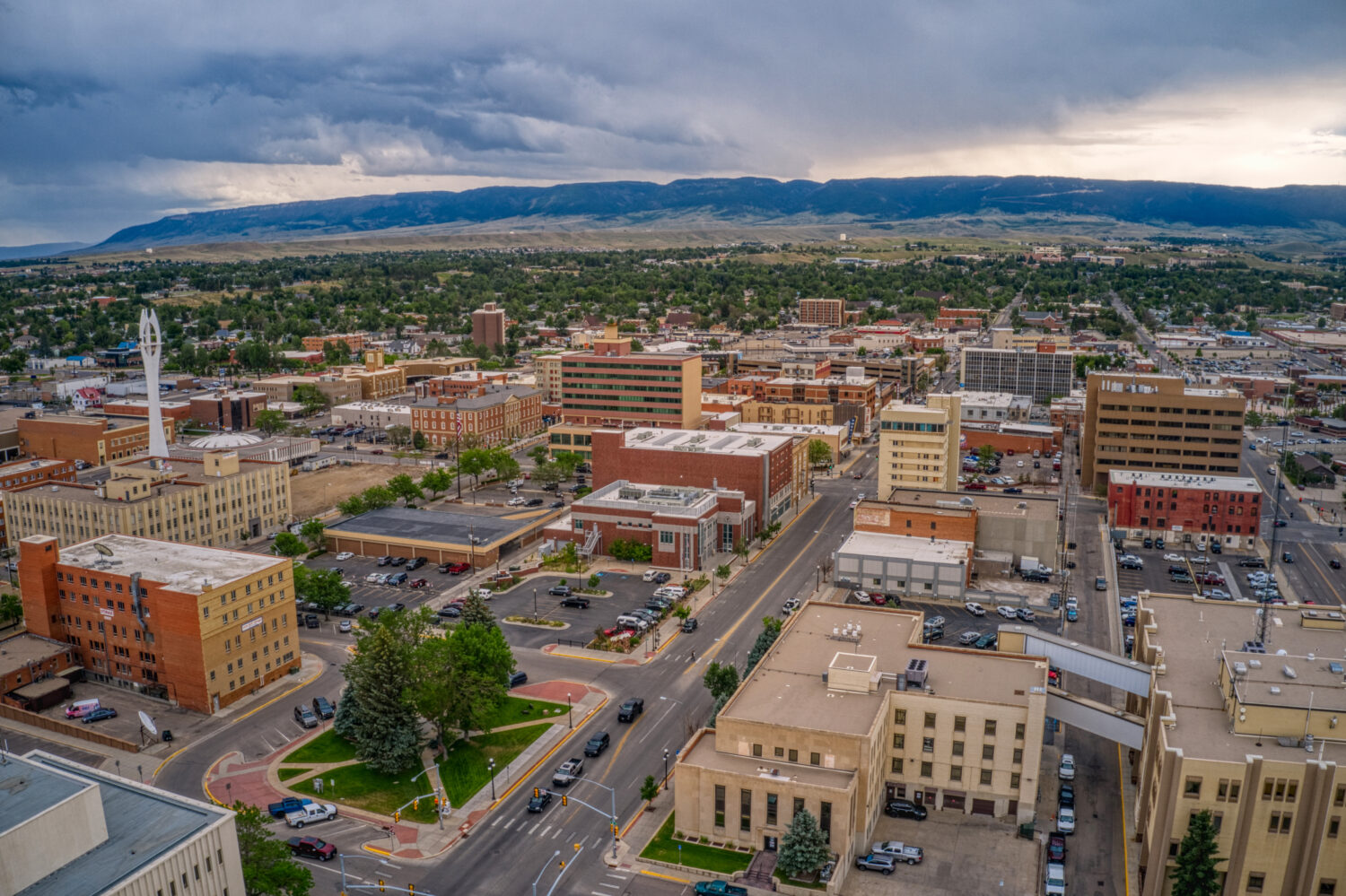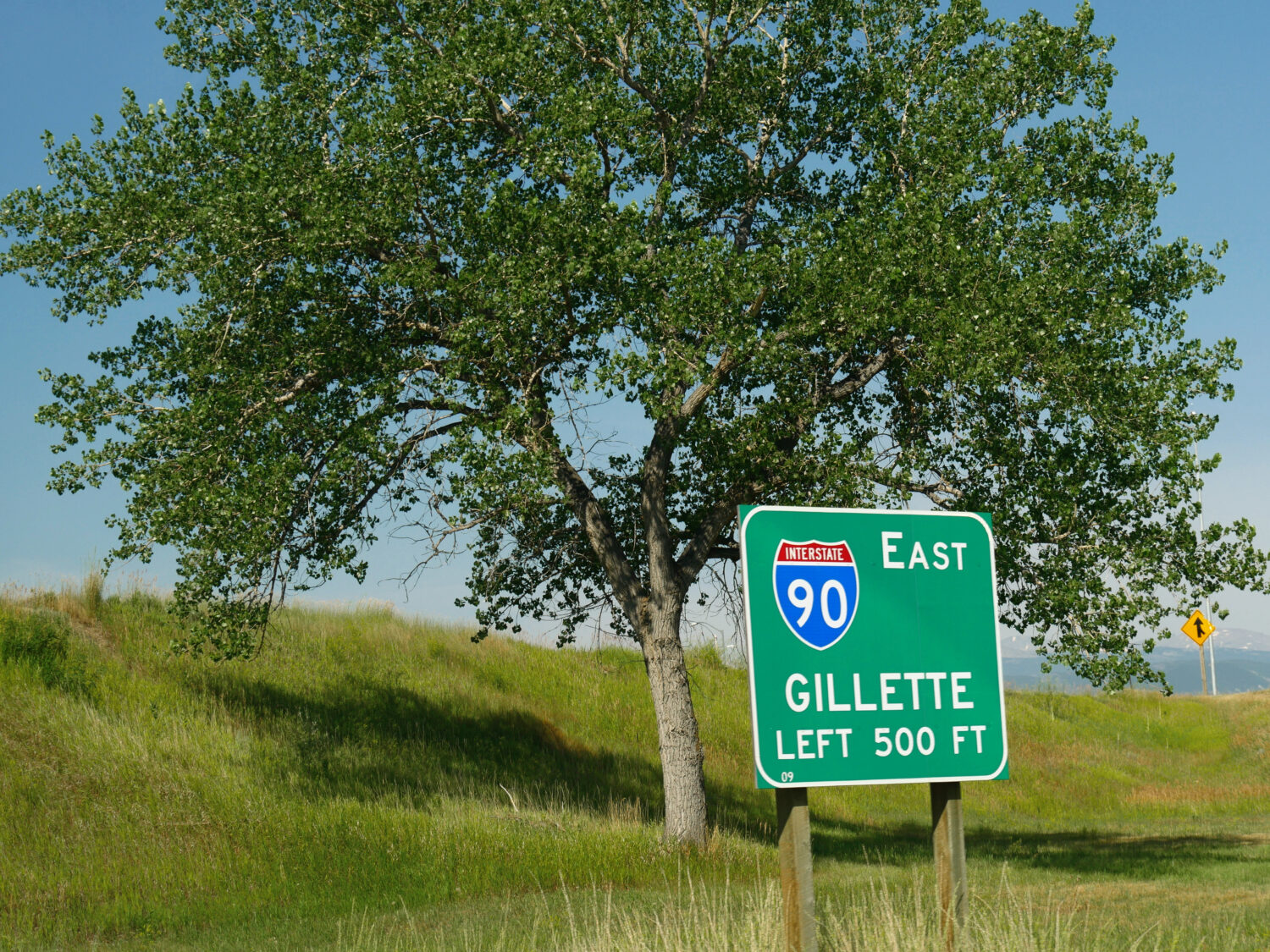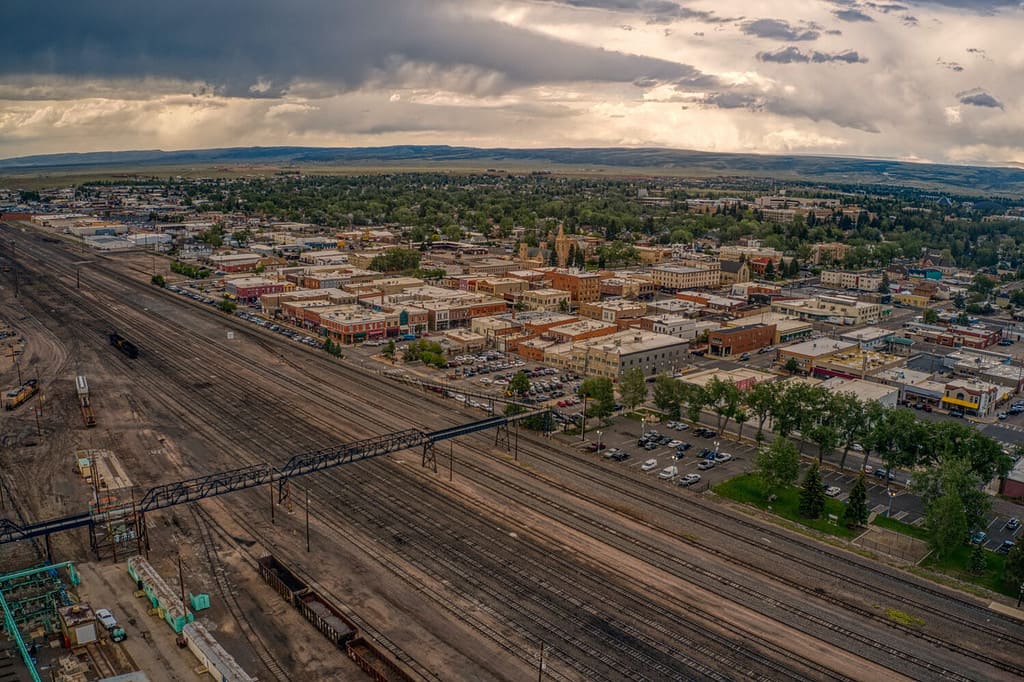Discover the Largest Cities in Wyoming (By Population, Total Area, and Economic Impact)
Wyoming is in the Rocky Mountain section of the Western United States. This state, mainly rural, is home to only half a million people, with few large cities with strong economies.
Keep reading to discover the largest cities in Wyoming, ranked by population, total area, and economic impact.
Largest Cities in Wyoming by Population
Wyoming is only the least populated state in the country, with over 580,000 inhabitants. Its largest cities are relatively small compared to other states.
| 1 | Cheyenne | 65,132 |
| 2 | Casper | 59,038 |
| 3 | Gillette | 33,403 |
| 4 | Laramie | 31,407 |
Cheyenne

©Jacob Boomsma/Shutterstock.com
Cheyenne, Wyoming’s capital and largest city, is also the state’s most populated. This vibrant and historically rich community is in the southeastern part of the state near the Colorado and Nebraska borders.
As of the 2020 United States Census, Cheyenne had a population of approximately 65,132 residents. The city’s population increased by 9.5% between 2010 and 2022. With a large land area, Cheyenne has a moderate to low population density of 1,9991.23/sq mi. This leaves ample space for the residents in the different neighborhoods.
While Cheyenne is not a large city by national standards, it plays a significant role in the state’s culture, economy, and government. Its population exhibits an aging trend, with a growing proportion of elderly residents. However, several educational institutions and the F.E. Warren Air Force Base bring many younger individuals to the city.
Casper

©Jacob Boomsma/Shutterstock.com
The second largest city by population in Wyoming, Casper is in the central part of the state, along the North Platte River. It serves as a regional hub for commerce, industry, and culture in the region.
According to the 2020 census, Casper’s population is 59,038 inhabitants. Like Cheyenne, its population increased during the 2010-2020 period, increasing by 6.7%. Casper’s density is 2,182.21/sq mi, a moderate number that offers ample space to its inhabitants.
A significant part of Casper’s population is middle-aged or older. However, Casper College, a community college with over 4,000 students, attracts younger people to the city.
Gillette

©RaksyBH/Shutterstock.com
Gillette, the third-largest city by population, is in Campbell County, Northwest Wyoming. The town is primarily known for its connection to the coal mining industry.
The city of Gillette, in 2020, had a population of 33,403 residents. Gillette had a substantial population increase between 2010 and 2020, with 14.8%. Its population density is relatively low at 1,384.66/sq mi, making it a great place to live with ample space for its residents.
Like other cities in Wyoming, Gillette has an aging population. Many young residents move for educational and career opportunities after high school.
Laramie

©Jacob Boomsma/Shutterstock.com
The fourth-largest city by population, Laramie, is in the state’s southeastern part, close to the Colorado border. This charming and historic city is famous for its picturesque landscapes and outdoor recreational opportunities.
Laramie’s population, as of the 2020 census, is 31,407. Contrary to Cheyenne, Casper, and Gillette, the city of Laramie does not reflect steady population growth. Over ten years, from 2010 to 2020, its population only gained 1.9%. Laramie has a small population density of 1,781.74/sq mi. It varies within different areas in the city. This lower population density aligns with Wyoming’s overall character as a sparsely populated state with vast open spaces.
Laramie does not suffer from a severe aging population, unlike the preceding cities. The city’s economy is diverse, with various sectors that attract a lot of young workers.
Additionally, Laramie is home to the University of Wyoming and welcomes approximately 11,000 undergraduate and graduate students in Laramie. The student population makes up 35% of the city’s population.









